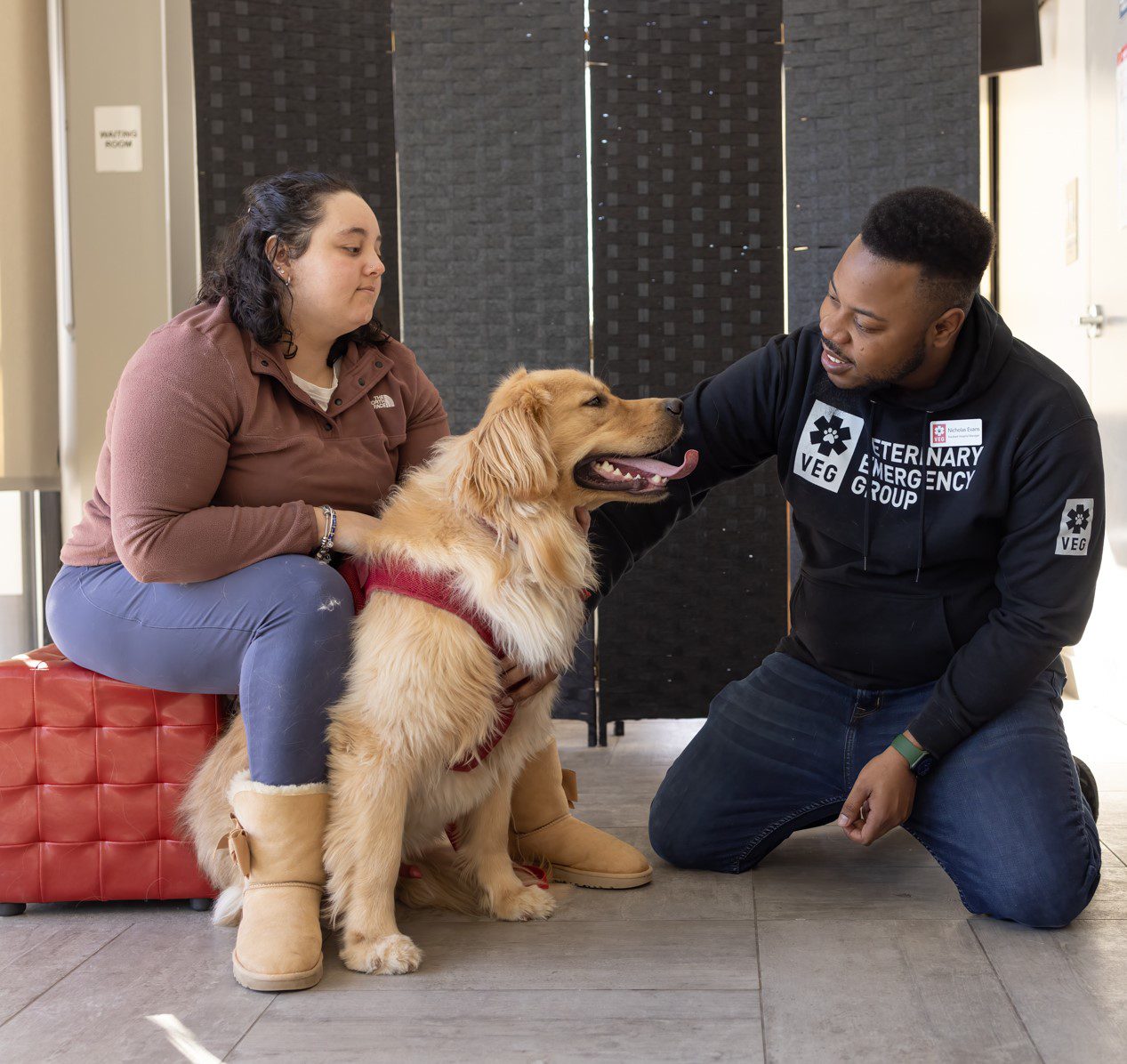
Dog Pacing and Panting: When You Should be Concerned
Dr. Wasi Ashraf
Call & Speak with a doctor Open 24/7, Even Holidays!
Walk in today for:
Emergencies
Point-of-Care Ultrasound
Urgent Care
X-Rays
Diagnostics + Testing
End-of-Life Care
Surgery
Treatment + Hospitalization
Is your dog pacing, or panting excessively? Is he or she showing both of these behaviors at the same time? What does this mean, and is it something to worry about?
Pacing and panting can sometimes indicate a serious health problem in dogs, depending on the situation. In the article below, we’ll help you better understand when these behaviors are concerning and when they are nothing to worry about. With the help of this information, you can narrow down whether or not your dog needs to see a vet.
Potential Reasons Why Your Dog is Pacing and Panting
Pacing and panting are non specific clinical signs. There are many different reasons why your dog might suddenly exhibit these behaviors and it’s important to try to differentiate between them.
Listed below are the 6 possible causes:
Difficulty Breathing
Difficulty breathing along with panting or pacing indicates something is seriously wrong with your pet. If you notice these symptoms together, do not wait to take your dog to the emergency vet.
Dogs who pant, pace, and have trouble breathing all at once may be suffering from primary cardiac or respiratory disease, anaphylactic shock, poisoning, internal organ damage or illness, or any number of other potential problems. Even if it turns out that your dog is okay, it’s better to rule out these dangerous possibilities when you notice these symptoms presenting at the same time.
Whining and Drooling
Whining and drooling along with panting and pacing may indicate that your dog ingested something toxic. Whining may also be related to discomfort. Your pet may be uncomfortable due to a variety of causes, and you may not be aware of what’s going on. In this case, take your pet to a vet as soon as you can for a diagnosis.
Some dogs pant, pace, whine, and drool when they are anxious or afraid. If your dog has separation anxiety or is afraid of fireworks and thunder, these symptoms may only occur surrounding the events your dog is afraid of. In this instance, you don’t necessarily need an emergency vet, but you should see your regular vet for assistance.
Ingestion of Foreign Object, Toxic Material, or Human Food
If you know or suspect your dog has swallowed a foreign object such as part of a chew toy, any toxic materials like houseplants or rat bait, or a human food that is dangerous for dogs, take them to the emergency vet right away. Panting and pacing along with ingestion of any of these substances can indicate a life-threatening condition.
Dogs who swallow foreign objects are at risk of intestinal blockages that can lead to death. Additionally, dogs who eat toxic materials or consume human food that is dangerous to dogs may risk being poisoned. All of these conditions can cause panting and pacing as early symptoms.
Insect or Snake Sting or Bite
Dogs who are allergic to insect bites and stings or to snake bites may experience panting and pacing as a result of anaphylaxis. If your dog has recently been bitten or stung and has started to pant and pace, this is a serious sign that requires a trip to the emergency vet right away.
When your dog reaches this point following an insect or snake bite or sting, this means their body is going into a state of anaphylaxis. These symptoms may quickly be followed by swelling of the face and neck, increased heart rate, high fever, and difficulty breathing if left untreated.
Abdominal Swelling
Abdominal swelling along with panting and pacing may indicate something is wrong with the heart. These symptoms may also indicate problems with other organs, including the liver, pancreas, kidneys, or lungs.
Dogs who have a known heart problem such as an existing heart murmur or heartworm disease should come into the emergency veterinarian right away if signs of respiratory distress occur as this could indicate the onset of congestive heart failure. If your dog has new or worsening abdominal swelling with no known pre-existing conditions, go to the emergency vet to determine what might be causing this clinical sign.
Existing Health Problem
If you know your dog has an existing serious health problem and you observe pacing and panting behaviors, these behaviors may be a result of their illness or condition.
In some cases, it may be advisable to wait and monitor. However, each situation is different, so you should at least contact your vet to find out what they recommend and whether or not your pet needs to be seen.
Call VEG if You’re Concerned About Your Dog’s Panting or Pacing
By learning to pay close attention to your dog’s behavior and changes in their routine, you can recognize symptoms before they get out of hand. When your dog is showing pacing or panting symptoms that worry you, don’t wait—take them to the vet to find out what’s going on.
Even if your pet is not necessarily doing anything else that concerns you, it’s always important to listen to your gut when it comes to the health of your furry friend. Any time you’re worried, it’s better to get everything checked out rather than potentially missing early warning signs.
Contact VEG if you concerned about your dog’s panting or pacing. We have locations all over the country with emergency vets who are available 24/7 to help you and your pet. Our team knows the potential causes of pacing and panting and can guarantee that your dog will get the proper care that they need.

